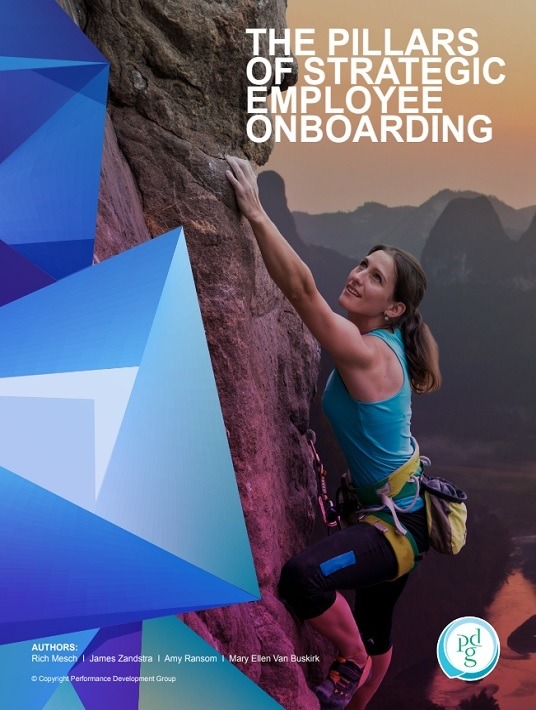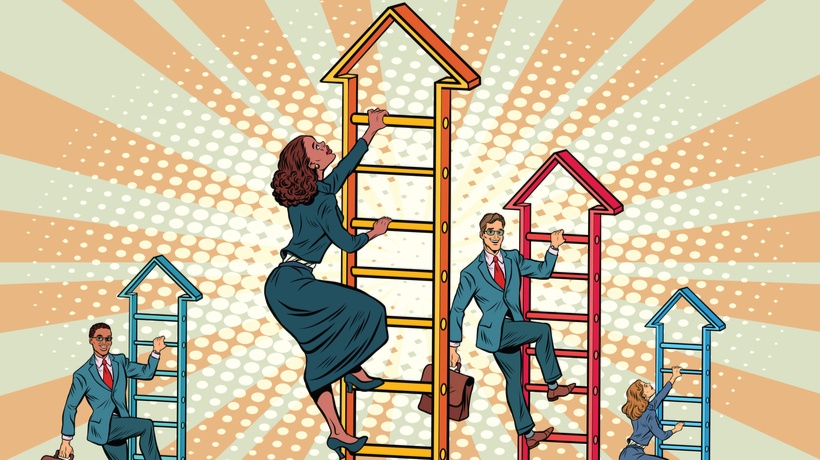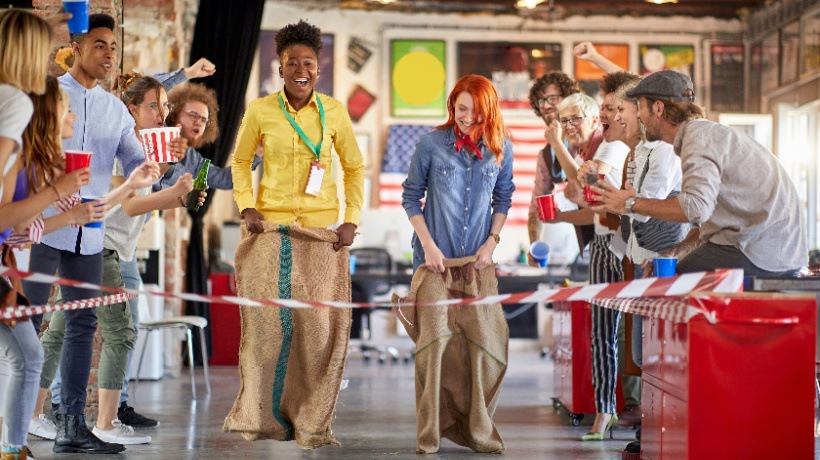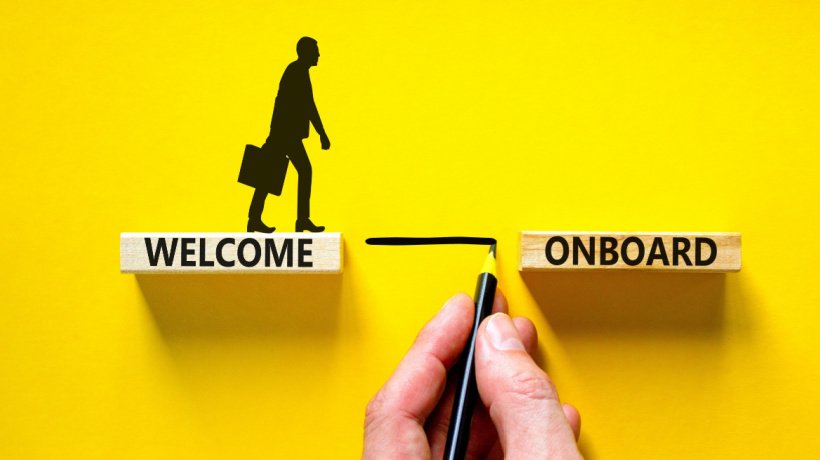How To Level Up Your Onboarding Process With A Gamification Strategy
It’s a whole new world out there, and competition for top talent is fiercer than it’s been in years. Attracting top talent is a challenge, and retaining that talent is even more difficult. First impressions matter, and onboarding are typically one of an employee’s first experiences on the job. Old-school “employee orientation” is a thing of the past; the onboarding experience needs to build excitement, engagement, and a real sense of purpose—all while genuinely preparing each employee to excel at their job.

What Is Gamification?
Gamification is one of the most misunderstood terms in learning & development. Despite its name, gamification isn’t really about playing games. Rather, it’s about applying some of the principles of gaming to a learning experience. So how is that different from playing a game? The differences are subtle but important:
• Games usually have winners and losers, but in a gamified learning experience, we want to minimize failure as much as possible. This isn’t an “everybody gets a trophy” mentality; it’s an engagement strategy.
• Games are often designed for endless replayability; learning experiences need to focus on growth and forward motion.
• Some people spend years building the skills to be successful at games. In learning environments, we usually don’t have that much time; we need to design interactions that can drive similar levels of engagement in a shorter timeframe.
Gamification isn’t about playing “Monopoly” or “Clue” or World of Warcraft or Fallout. It is about looking at these types of games and understanding what makes them exciting, engaging, and fun—and applying that to the way we onboard.
Why Use Gamification For Onboarding?
Like most aspects of learning, it comes down to motivation, engagement, and behavior change. There’s a reason we’ve been playing games for thousands of years. They engage us, draw us in, and make us want to gain skills and improve our performance.
Onboarding is one of the first experiences that a new hire has when they join a company. Starting a new job should be full of excitement, anticipation, and the thrill of the possible. The onboarding experience should match that excitement and anticipation. Onboarding deeply affects how employees perceive the company’s culture. A recent study indicates that “90% of new employees determine within the first six months if they’ll stay with a company or leave,” and new employees are “69% more likely to stay with the company for at least three years” if they experience well-structured onboarding.
Companies used to think of onboarding as the first few days on the job, but the truth is, onboarding encompasses an employee’s first 3-12 months. It involves aligning to its vision and culture, learning about the job, networking with colleagues, identifying the resources needed to succeed, and growing job skills. It’s a tall order, and it takes some time to execute properly.
The challenge with some onboarding is that it’s fed through a firehose; new hires are overwhelmed by facts and figures and lists, retaining little of what they’ve learned. Onboarding works best when distributed over time, with ample opportunity to implement learning and receive feedback. And that’s where gamification comes in.
Gamification helps maintain engagement over time. Gamification is not an event but a journey. Using gamification for onboarding sets the tone for a company culture that is creative, out-of-the-box, and exciting.
How Do I Create A Gamified Onboarding Experience?
1. A Goal
What is the purpose of this experience? What am I trying to accomplish?
Almost all games have a goal. In chess, it’s to put the other player’s king in check; in “Monopoly,” it’s to amass property and wealth; in Super Mario Brothers, it’s to rescue the princess. The goal is what you need to accomplish, but the game is about how you accomplish it. This brings us to our next element—
2. A Journey
The journey is the path you take toward the goal.
Journeys include many steps or challenges that you need to complete to proceed in the game. That’s a big part of what makes gamification so engaging; your destination stays the same, but each challenge is unique. There is always something new to try, which keeps the experience lively and exciting.
3. A Method Of Measuring Progress And Accomplishment
Gamification doesn’t need to be about winning, but it should be about accomplishing, achieving, and applying the knowledge and skills you have acquired. While there are many ways of measuring achievement, here are a few that work particularly well in gamification:
- Scores
Most games keep score in one way or another. Tracking scores can help build engagement, even if you’re not competing against other players. - Competition
Competing with your peers can be very engaging and a lot of fun. We’ve seen learners spend more time on a learning assignment than required because they wanted to snag as many points as possible to “win.” Of course, competition can be a slippery slope; we want our audience focused on learning and growing, not just winning. But applied appropriately, competitive gamification can build engagement for a very long time. - Rewarding achievements
Gamification often uses a concept called “badging,” where you receive tokens, or badges, for specific accomplishments. Badges are helpful because it allows you to achieve multiple small wins over a long journey. And badges are not unique to gamification; the journey to be a Six Sigma Champion is long, so you can accomplish multiple achievements along the way by winning your Yellow Belt, Green Belt, Black Belt, and so on. - Progressing down a path, or “leveling up”
In many video games, after you accomplish a number of achievements, you “level up” or move on to a more challenging level of the game. But leveling up is not unique to video games; in an ancient game like “Checkers,” you level up when you make it to your opponent’s side of the board and become a King, complete with new powers and abilities. Providing learners with the opportunity to level up builds both engagement and a real sense of accomplishment.
Gamification And The Onboarding Journey
Onboarding has unique challenges and opportunities while aligning particularly well with onboarding. Onboarding is about the excitement of something new, being immersed in the company culture, understanding how business is done, and meeting and networking with new colleagues.
Here’s how gamification impacts those aspects:
1. Collaboration & Networking
In gamification, it’s easy to set up scenarios where people need to collaborate to succeed. These scenarios are a great opportunity for participants to network, meet new people, and understand what each role brings to the table. It can also help new hires learn how collaboration can drive a better outcome. In one successful gamified onboarding experience, new hires completed a game board by successfully scheduling meetings with key stakeholders and gathering information from them, like a scavenger hunt. By the end of the experience, they not only had met many of the key leaders of the organization, but they had also begun building lasting relationships with them. Learning this behavior in a game is “sticky;” it will stay with you long after the game is over.
2. Engagement
You can’t learn anything if you’re not paying attention. Why teach new hires an abstract skill when you can get them to engage in the actual behavior? Gamification gets people involved, gives them a goal, and helps them understand what they must do to hit that goal. And it all happens painlessly—in fact, they might not even realize that they’re learning.
3. Culture
Learning about a company’s culture in an eLearning or classroom environment can be dry and abstract. The best way to learn a culture is to live it. In a gamified environment, new hires can complete experiential assignments that require them to behave in ways that align with the company culture. Suddenly, culture is not an abstract concept but a set of real behaviors that employees have learned and can repeat.
4. Social Learning
Whether we’re playing our game in a real-life room or playing online in a virtual space, we’re still working in a social environment. That means we can create our own experience (within the rules of the game, of course), and the experience changes based on the people present. We can share our knowledge, experiences, and assumptions and learn from (and teach) each other. We may be playing a game, but what we’re learning from each other is very real. And that leads us to—
5. Informal Learning
Gamified environments create wonderful opportunities for informal learning. As a team of people driving toward a goal, we inevitably share all kinds of knowledge. All the notebooks in the world won’t drive learning like an experienced colleague sharing a great story.
Conclusion
Like any learning approach, gamification won’t solve every challenge. However, in onboarding, gamification presents unique benefits. As competition for talent increases, first impressions matter; engaging onboarding can make a new hire feel they’ve made the right choice in joining your organization. But the impact of gamified onboarding goes beyond first impressions; it can build stronger networks, fortify company culture, and better prepare team members for the challenges ahead.
Download the eBook The Pillars Of Strategic Employee Onboarding for insider secrets to launching a new hire training program that's adaptive, personalized, and perfectly suited for your modern workforce. Also, join the webinar to discover how onboarding drives business success!









